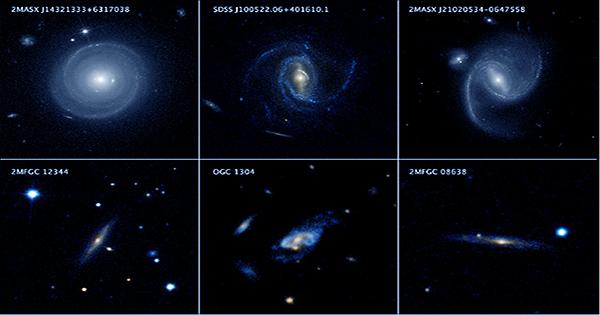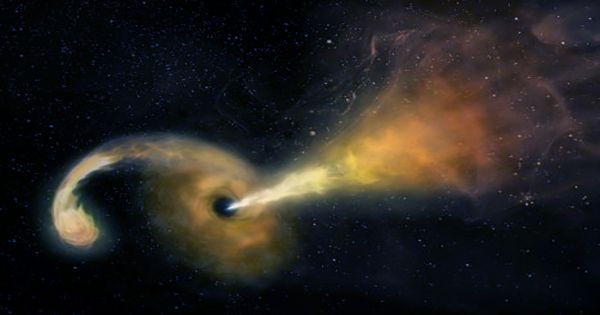Supermassive black holes are usually the center of a galaxy. They sit there and weigh a few million (if not billions) from the mass of our Sun at so it came as a surprise when astronomers were able to catch one moving at high speed through its host galaxy.
This type of setup thought to be possible, but finding a fast-moving black hole is not easy. Reporting in The Astrophysical Journal, the team studied Supermassive black holes in 10 galaxies. Nine of these showed nothing confusing, but observations have shown that the Galaxy J0437 + 2456 have a black hole that travels at speeds of about 180,000 kilometers (110,000 miles) per hour.
Lead author Dr Dominic Pesce, from the Harvard Smithsonian Center for Astrophysics, said in a statement, “We don’t expect most Supermassive black holes to be running; they can usually just sit around.”

“They’re so heavy that they’re hard to run. Consider how much harder it is to kick a bowling ball at speed than to kick a soccer ball – in this case, realizing the ‘bowling ball’ is a million times the mass of our sun. That’s a very strong kick for it Need.” The motion of the black hole was estimated using water. Water molecules orbiting black holes can sometimes produce incredibly bright radio-signals like a laser, but usually in electromagnetic microwave parts, hence their name, Mass.
The mess of J0437 + 2456 shows a different velocity compared to the amount measured for the entire galaxy. It also has different speeds from measuring gases and stars from the core of the galaxy. This piece of evidence supports the idea that at some point the whole system has undergone some major disruption. Researchers have put forward two hypotheses to explain what they saw. “We are observing the merging of two Supermassive black holes,” explained Jim Condon, a radio astronomer at the National Radio Astronomy Observatory.
The alternative is that another Supermassive black hole was involved but not through merger. Two Supermassive black holes can orbit each other to form a binary pair. Such systems are not easy to find. Pace added, “Despite every expectation they should have some abundance, scientists have had a very difficult time identifying obvious examples of binary Supermassive black holes.”
“What we can see in the Galaxy J0437 + 2456 is that one such pair has a black hole and the other is hidden in its radio observations due to lack of radio observation.” Further observations of this galaxy, located 230 million light-years from Earth, need to work out what this enchanting black hole sent on this colorful high-speed track.
















